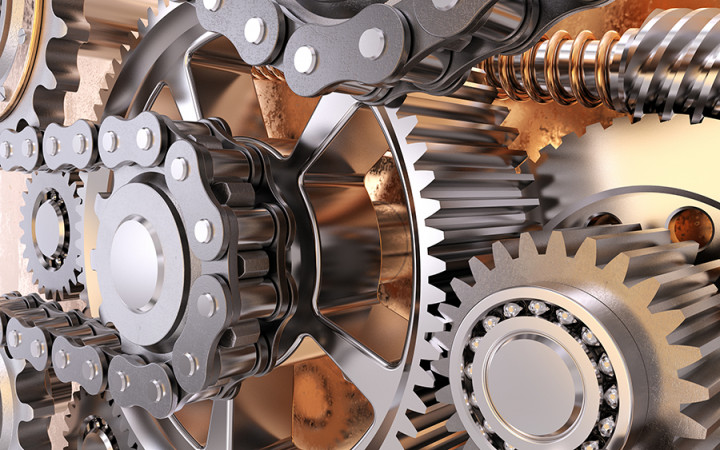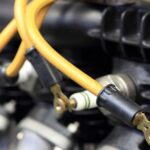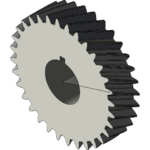A gear also known as “gear wheel” is a rotating machine part having cut teeth, or cogs, which mesh with another toothed part in order to transmit torque. Two or more gears working in tandem are called a transmission and can produce a mechanical advantage through a gear ratio and thus may be considered a simple machine. Geared devices can change the speed, magnitude, and direction of a power source. The most common situation is for a gear to mesh with another gear, however a gear can also mesh a non-rotating toothed part, called a rack, thereby producing translation instead of rotation.
The gears in a transmission are analogous to the wheels in a pulley. An advantage of gears is that the teeth of a gear prevent slipping.
When two gears of unequal number of teeth are combined a mechanical advantage is produced, with both the rotational speeds and the torques of the two gears differing in a simple relationship.
There are tiny gears for devices like wrist watches and there are large gears that some of you might have noticed in the movie Titanic. Gears form vital elements of mechanisms in many machines such as vehicles, metal tooling machine tools, rolling mills, hoisting and transmitting machinery, marine engines, and the like. Toothed gears are used to change the speed, power, and direction between an input and output shaft.
1) Gears are the most common source used for power transmission.
2) They can be applied for two shafts which are-
· Parallel
· Collinear
· Perpendicular & Intersecting
· Perpendicular and Non-intersecting
· Inclined at an arbitrary angle


